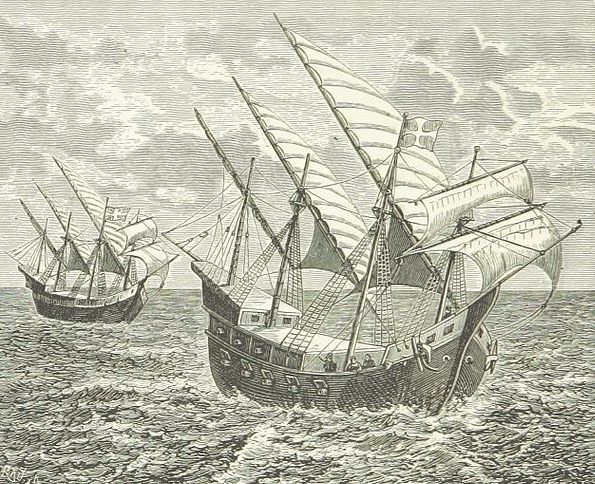Bartolomeu Dias
A famous Portuguese navigator of the fifteenth century, discoverer of the Cape of Good Hope; died at sea, 29 May, 1500.
Several Portuguese historians state that he was a relative or descendant of João Dias who sailed around Cape Bojador in 1434, and of Diniz Dias who is said to have discovered the Cape Verde Islands. As early as 1481 Bartolomeu Dias had accompanied Diogo d’Azambuja on an expedition to the Gold Coast.
Dias was a cavalier of the royal court, superintendent of the royal warehouses and sailing-master of the man-of-war “San Christovao”, when King John (João) II appointed him on 10 October, 1486, as the head of an expedition which was to endeavor to sail around the southern end of Africa. Its chief purpose was to find the country of the Christian African king known as Prester John, concerning whom recent reports had arrived (1486) through João Alfonso d’Aveiro, and with whom the Portuguese wished to enter into friendly relations.
After ten months of preparation Dias left Lisbon the latter part of July or the beginning of August, 1487, with two armed caravels of fifty tons each and one supply-ship. Among his companions were Pero d’Alemquer, who wrote a description of Vasco da Gama’s first voyage, Leitao, João Infante, Alvaro Martins, and João Grego. The supply-ship was commanded by Bartolomeu’s brother, Pero Dias. There were also two negroes and four negresses on board who were to be set ashore at suitable spots to explain to the natives the purpose of the expedition.
Dias sailed first towards the mouth of the Congo, discovered the year before by Cao and Behaim, then following the African coast, he entered Walfisch Bay, and probably erected the first of his stone columns near the present Angra Pequena. From 29° south latitude (Port Nolloth) he lost sight of the coast and was driven by a violent storm, which lasted thirteen days, far beyond the cape to the south. When calm weather returned he sailed again in an easterly direction and, when no land appeared, turned northward, landing in the Bahia dos Vaqueiros (Mossel Bay). Following the coast he reached Algoa Bay, and then the limit of his exploration, the Great Fish River, which he named after the commander of the accompanying vessel, Rio Infante. It was only on his return voyage that he discovered the Cape, to which, according to Barros, he gave the name of Cabo Tormentoso. King John, in view of the success of the expedition, is said to have proposed the name it has since borne, Cape of Good Hope. In December, 1488, Dias returned to Lisbon after an absence of sixteen months and seventeen days. He had shown the way to Vasco da Gama whom in 1497 he accompanied, but in a subordinate position, as far as the Cape Verde Islands.
In 1500 Dias commanded a ship in the expedition of Cabral; his vessel, however, was one of those wrecked not far from the Cape of Good Hope, which he had discovered thirteen years before. An official report of the expedition to the cape has not yet been found. Besides the account by Barros there is a note written on the margin of page 13 of a manuscript copy of Cardinal Pierre d’Ailly’s “Imago Mundi”, which is of importance, as this copy was once the property of Christopher Columbus. Ravenstein has attempted, and not unsuccessfully, by the aid of contemporary charts to reconstruct the entire voyage with the different stopping-points of the route.
BARROS, Decadas da Asia, Dec. I, bk. III, iv; RAVENSTEIN, The Voyages of Diogo Cao and Bartholomew Dias in The Geographical Journal (London, 1900), XVI, 625-55; BEHRENS, Die erste Umsegelung des Kaps der Guten Hoffnung, durch Bartholomeu Dias in Die Natur (Halle, 1901), L, 7-9, 15 19.
OTTO HARTIG (Catholic Encyclopedia)









